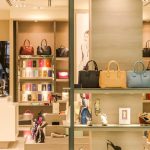By Pearl Academy Editorial Team
Product design is a multifaceted discipline that bridges the gap between creativity and functionality. It is the art and science of crafting consumer products that are not only visually appealing but also user-friendly and practical. In a world inundated with countless choices, the role of product design cannot be underestimated. It’s the key to making products stand out in a crowded market.
The Intersection of Aesthetics and Utility
At its core, product design involves creating items that offer value to consumers. Whether it’s a smartphone, a piece of furniture, or a kitchen appliance, a well-designed product seamlessly integrates aesthetics and utility. It’s not just about making something look good; it’s about ensuring it serves its purpose effectively.
Product designers carefully consider the user experience. They think about how a product feels in your hand, how it performs, and how it simplifies your life. Good product design can transform mundane tasks into enjoyable experiences. For example, consider the elegant and intuitive design of the iPhone, which combines style and functionality seamlessly.
Iterative Design Process
Product design is a highly iterative process. It involves multiple stages, each aimed at refining and perfecting the product. The process typically begins with conceptualization, where designers brainstorm ideas and create rough sketches. These ideas are then refined, and prototypes are built.
Prototyping is a critical phase in product design. It allows designers to test and evaluate the product’s performance and make necessary improvements. This process may involve countless iterations, each bringing the product closer to its final form. It’s a balance of trial and error, creativity, and engineering.
User-Centered Design
One of the key principles of product design is user-centered design. This approach places the end-user at the forefront of the design process. Designers strive to understand the needs, preferences, and pain points of the intended audience. By empathizing with users, designers can create products that cater to their specific requirements.
For instance, a designer working on a new laptop would consider factors such as screen size, weight, keyboard comfort, and battery life based on the preferences and needs of the target users. User-centered design leads to products that are not only functional but also resonate with consumers on a personal level.
Sustainability and Environmental Impact
In recent years, there has been a growing emphasis on sustainability in product design. Designers are increasingly mindful of the environmental impact of the products they create. Sustainable design principles focus on using eco-friendly materials, minimizing waste, and ensuring products are durable and repairable.
Sustainability in product design isn’t just a trend; it’s a necessity. As the world faces environmental challenges, designers play a pivotal role in reducing the ecological footprint of consumer products. Products that are both well-designed and eco-conscious are becoming increasingly popular among consumers.
In a world where the market is saturated with products, good design is a differentiator. Product design is a harmonious blend of form and function, rooted in a deep understanding of user needs. It’s a dynamic and iterative process that constantly seeks to improve the product’s performance and aesthetics.
As the world moves towards sustainability and eco-consciousness, product designers are also adapting their approach to ensure that their creations are not just beautiful and functional, but also environmentally responsible. if you’re passionate about product design and want to explore this dynamic field further, enrol into Pearl Academy’s Master’s Degree Program Product Design.












